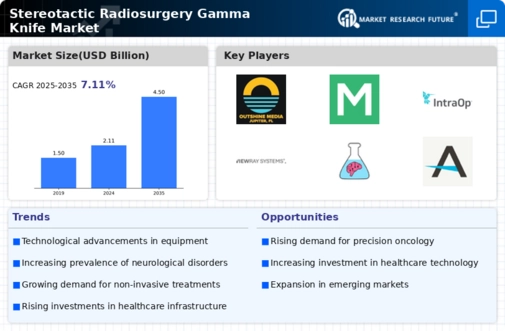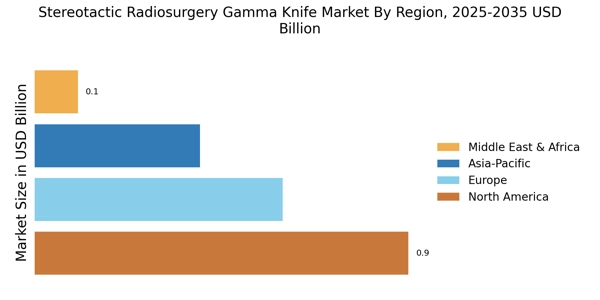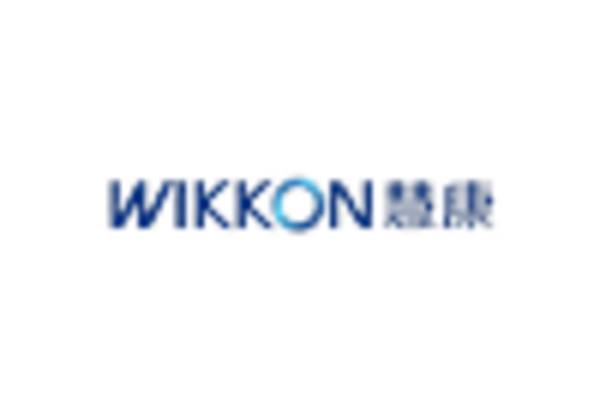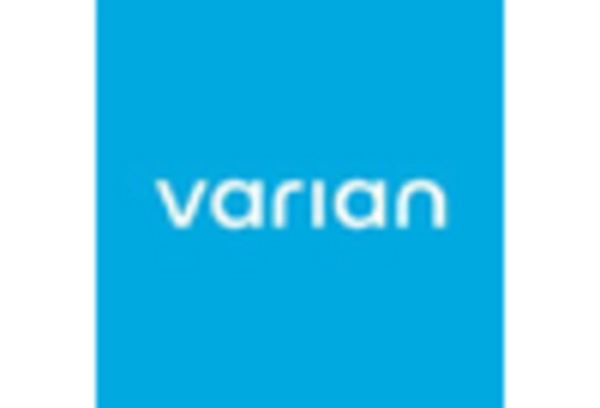Increasing Incidence of Brain Tumors
The rising incidence of brain tumors is a critical driver for the Stereotactic Radiosurgery Gamma Knife Market. According to recent statistics, brain tumors are among the most common types of cancer, with a notable increase in diagnoses over the past decade. This trend is likely to continue, leading to a higher demand for effective treatment options such as Gamma Knife radiosurgery. The ability of this technology to treat tumors with precision and minimal side effects makes it an attractive option for both patients and healthcare providers. Consequently, the market is expected to expand as more patients seek advanced treatment solutions for brain tumors.
Rising Demand for Non-Invasive Treatments
There is a notable increase in the demand for non-invasive treatment options within the Stereotactic Radiosurgery Gamma Knife Market. Patients and healthcare providers are increasingly favoring procedures that minimize recovery time and reduce the risk of complications associated with traditional surgical methods. The Gamma Knife offers a non-invasive alternative for treating various brain tumors and functional disorders, which aligns with the growing trend towards outpatient care. Market data suggests that the non-invasive treatment segment is expected to account for a significant share of the overall market, driven by patient preferences and advancements in technology that enhance treatment efficacy.
Collaborative Efforts in Research and Development
Collaborative efforts in research and development are playing a pivotal role in advancing the Stereotactic Radiosurgery Gamma Knife Market. Partnerships between medical institutions, technology companies, and research organizations are fostering innovation and improving treatment methodologies. These collaborations are focused on enhancing the capabilities of Gamma Knife systems, including the development of new software and hardware solutions. As a result, the market is likely to benefit from a continuous influx of innovative products and services that improve patient outcomes. This collaborative approach is expected to drive growth and expand the reach of stereotactic radiosurgery in various clinical settings.
Technological Advancements in Stereotactic Radiosurgery
The Stereotactic Radiosurgery Gamma Knife Market is experiencing a surge in technological advancements that enhance treatment precision and patient outcomes. Innovations such as improved imaging techniques and real-time tracking systems are being integrated into Gamma Knife systems. These advancements allow for more accurate targeting of tumors, minimizing damage to surrounding healthy tissue. The introduction of advanced software algorithms also aids in treatment planning, making procedures more efficient. As a result, the market is projected to grow at a compound annual growth rate of approximately 7.5% over the next five years. This growth is indicative of the increasing reliance on technology to improve patient care in the Stereotactic Radiosurgery Gamma Knife Market.
Growing Awareness and Acceptance of Stereotactic Radiosurgery
There is a growing awareness and acceptance of stereotactic radiosurgery among both patients and healthcare professionals, which is positively impacting the Stereotactic Radiosurgery Gamma Knife Market. Educational initiatives and outreach programs are helping to inform patients about the benefits of Gamma Knife treatment, including its effectiveness and safety profile. As more healthcare providers become familiar with the technology, they are more likely to recommend it as a viable treatment option. This increased acceptance is expected to drive market growth, as more patients seek out this innovative approach to treating neurological conditions.


















Leave a Comment